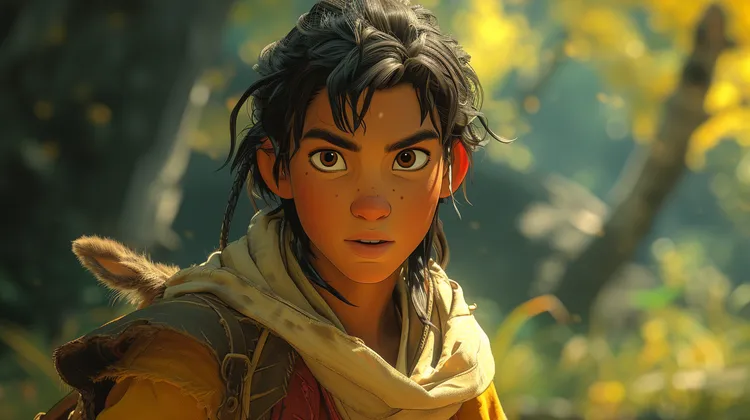Paragraph 1:
The gaming industry has always been on the cutting edge of technological innovation, pushing the boundaries of storytelling, graphics, and gameplay. One concept that’s starting to capture the imagination of developers and gamers alike is the idea of AI-powered Non-Player Characters (NPCs) that are not bound by the life-spans or the discrete digital worlds of individual games. Thanks to the pioneering work of thought leaders like Yat Siu, the gaming industry could be on the verge of introducing characters that persist across various game environments — effectively living forever.
Paragraph 2:
Yat Siu, a prominent figure in the world of technology and gaming, proposes a future where NPCs harness the power of sophisticated artificial intelligence to operate autonomously across multiple gaming platforms. This concept transcends the traditional scope of NPC design, where characters are often confined within the bounds of one game and limited by scripted behaviors.
Paragraph 3:
Imbued with AI, these NPCs could possess the ability to learn from player interactions, evolve over time, and make decisions independent of the original programming. Such a level of autonomy could create infinitely more dynamic and responsive gaming environments where each NPC carries its own unique history and personality.
Paragraph 4:
One of the most intriguing aspects of AI-powered NPCs is how they mimic the continuity of life. Through cloud-based technologies and shared digital spaces, an NPC could technically ‘live forever’, migrating from one game to another and thereby breaking the traditional lifecycle of digital characters, which typically ends when the game is turned off, or when the narrative concludes.
Paragraph 5:
In this future, one could imagine playing an RPG where a shopkeeper in one world could reference your past dealings with them in a completely separate game, creating an interconnectedness previously unattainable. This continuity could radically change the player’s relationship with game characters, fostering a sense of ongoing narrative and history that persists beyond individual gaming sessions.
Paragraph 6:
The idea extends beyond simple character transfer. These NPCs could maintain a consistent memory and personality across games. They could develop reputations that precede them, and players might seek out familiar NPCs for guidance, trade, or companionship, much as they would with other human players.
Paragraph 7:
Yat Siu’s vision also suggests a scenario where AI-powered NPCs could be customized and owned by players, perhaps through blockchain technology. This ownership would secure an NPC’s continuous existence and development across different intellectual properties and developers, leveraging the interoperability facilitated by decentralized platforms.
Paragraph 8:
The infrastructure required to support such a system would be considerable; games of differing genres and mechanics would need to find ways to integrate these persistent characters in a manner that is seamless and meaningful. It challenges the foundational design of video games and how disparate game worlds can communicatively and functionally overlap.
Paragraph 9:
With the rise of machine learning and neural networks, it’s becoming more conceivable to generate NPCs that can adapt to various game mechanics and story environments. AI models can be trained to understand the context of different games and react appropriately, perhaps even developing their own style of play that is consistent across games.
Paragraph 10:
The timeless existence of these NPCs also prompts a philosophical debate on the nature of artificial life and the ethical considerations of creating entities with potentially limitless lifespans. As these characters gain complexity and behavioral depth, questions arise about their rights, the responsibility of their creators, and how they exist in the virtual and potentially real world.
Paragraph 11:
Another consideration is the economic model surrounding these NPCs. In Yat Siu’s vision, the NPCs could potentially carry value, being traded or sold between players, or require micro-transactions to maintain or acquire services. This opens a new revenue stream for game developers but also requires careful regulation to prevent exploitation or other negative impacts on the gaming ecosystem.
Paragraph 12:
The future Pathed by visionaries like Yat Siu illuminates an exciting era for gaming. As AI-powered NPCs begin to travel across game boundaries, they could revolutionize the way narratives are crafted and elevate the role-playing experience to unprecedented levels. With the proliferation of these NPCs, games cease to be isolated stories and become part of a grand, interconnected universe akin to a digital multiverse.
Paragraph 13:
Despite the excitement, hurdles remain, including technical challenges, narrative cohesion, and the need for industry-wide cooperation and standards. The potential for creating a more immersive and lasting gaming experience is tantalizing. The groundwork laid by innovators such as Yat Siu paves the way for an evolution in gaming, where the characters we grow to love, or loathe, can indeed become timeless companions in our virtual adventures.




Industry-wide cooperation for this vision is key, and I’ve got my fingers crossed!
Customized NPCs with continuous existence across games… Managing that sounds like a full-time job. Pass. 😓
If games become part of a grand, interconnected universe, the way we interact with them will never be the same.
Introducing continuity of life in gaming through NPCs is such an intriguing concept. It’s going to revolutionize storytelling!
Owning a piece of the game in the form of an NPC? That’s an investment I’d be thrilled to make!